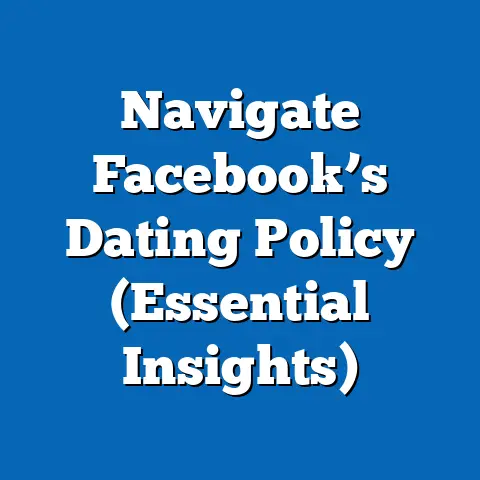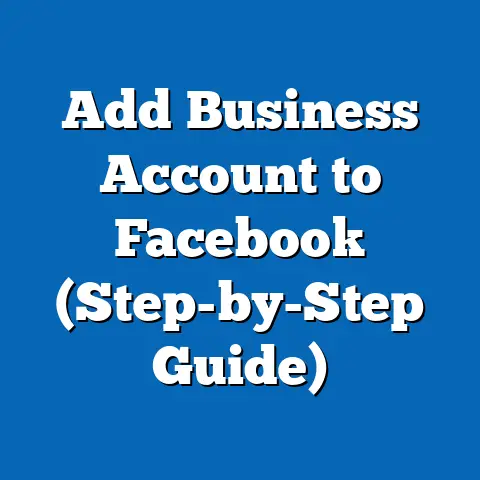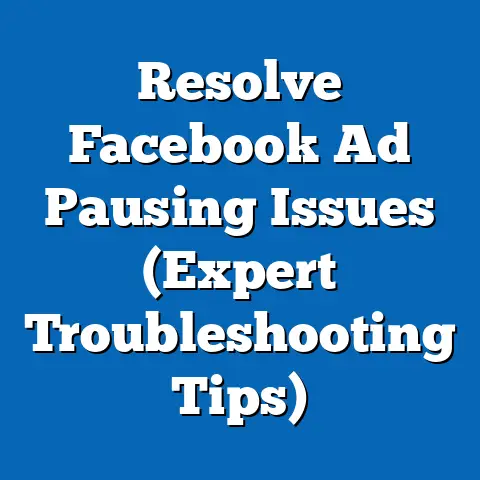Turn Off Translation in Facebook Ads (Expert Tips Revealed)
Have you ever felt like your carefully crafted Facebook ad was lost in translation? I have. I remember working with a client launching a campaign in South America. We meticulously crafted ad copy in English, assuming Facebook’s automatic translation would handle the rest. The initial results were… perplexing. Engagement was low, and we later discovered that some of our slang terms were completely misinterpreted, even offensive, in certain dialects. That experience taught me a valuable lesson: sometimes, less translation is more.
The world is increasingly interconnected, and reaching a global audience through Facebook ads seems like a no-brainer. But the path to international success isn’t always paved with seamless automatic translations. While Facebook’s translation features offer undeniable reach, they also present a complex dilemma for marketers. Is translation always beneficial? What are the risks of relying on automatic translations that might miscommunicate your message or dilute your brand’s voice? This article dives deep into the world of Facebook ad translations, exploring when and why you might want to turn them off, and offering expert tips to navigate the linguistic landscape effectively.
Understanding Facebook Ads Translation Settings
Facebook’s advertising platform is a powerful tool for reaching a massive audience, and its built-in translation features are a key part of that. The platform uses sophisticated machine learning algorithms to automatically translate your ads into the languages spoken by users in your target regions. The idea is simple: expand your reach and engage with potential customers who might not understand your original ad copy.
The advantages are clear. By leveraging automatic translation, you can theoretically connect with a far broader audience without the added expense and effort of manually translating each ad. This is especially appealing for businesses operating on a tight budget or those looking to quickly test the waters in new international markets. According to Facebook, ads translated into multiple languages can see a significant increase in reach and engagement.
However, this convenience comes with a caveat. Machine translation, while improving rapidly, isn’t perfect. It can struggle with nuances, idioms, slang, and cultural references. This is where things can get tricky. Imagine your witty tagline being rendered into something nonsensical, or worse, offensive, in another language. The potential for miscommunication is real. That’s why understanding when automatic translation isn’t suitable is crucial.
For example, I once consulted with a small business that sold handmade jewelry. Their target audience was primarily young, urban women. They ran a campaign with automatically translated ads, and the results were dismal. After digging deeper, we discovered that the translated ad copy sounded stiff and formal, completely missing the playful, authentic tone that resonated with their target demographic. We ended up rewriting the ads with professional translators, focusing on conveying the brand’s personality, and the results turned around dramatically.
Takeaway: Facebook’s translation features are a powerful tool, but they’re not a magic bullet. Understanding their limitations and considering the specific needs of your brand and target audience is essential.
The Case for Turning Off Translation
So, when should you consider turning off Facebook’s automatic translation? It’s not a decision to be taken lightly, but here are some compelling reasons why it might be the right move for your brand:
Cultural Sensitivity
This is, in my opinion, the most crucial consideration. Language is deeply intertwined with culture, and what might be perfectly acceptable in one culture could be taboo or offensive in another. Certain phrases or words can carry different connotations or meanings depending on the cultural context.
Think about it: humor, for instance, rarely translates perfectly. Sarcasm, puns, and wordplay often fall flat when translated literally. Similarly, visual cues can be misinterpreted. A gesture that’s considered friendly in one country might be rude in another.
I recall a campaign for a food delivery service that used a picture of someone giving a “thumbs up.” While universally recognized in many Western countries, this gesture is considered offensive in parts of the Middle East and South America. The company quickly pulled the ad and apologized, but the damage was already done. They learned a valuable lesson about the importance of cultural sensitivity in international marketing.
Brand Voice Consistency
Your brand’s voice is a vital part of your identity. It’s how you communicate your values, personality, and unique selling proposition to the world. Translation, especially automatic translation, can easily disrupt this carefully crafted voice.
Imagine your brand is known for its witty, irreverent tone. An automatic translation might sanitize your copy, turning it into something bland and generic. This not only fails to resonate with your target audience but also undermines your brand’s identity.
Maintaining a consistent brand voice across different languages requires more than just accurate translation. It requires adapting your message to resonate with the cultural nuances and communication styles of each target market. This often necessitates working with professional translators or native speakers who understand your brand and can effectively convey its personality in another language.
Targeted Messaging
The beauty of Facebook advertising lies in its ability to target specific demographics with highly personalized messages. Translation, however, can dilute this customization. When you rely on automatic translation, you’re essentially creating a one-size-fits-all message that might not resonate with anyone in particular.
For example, let’s say you’re promoting a new line of athletic apparel. You’ve created different ad campaigns targeting different segments: young athletes, fitness enthusiasts, and older adults. Each campaign features unique ad copy and visuals tailored to the specific interests and needs of that segment.
If you rely on automatic translation, you risk losing the nuances that make each campaign effective. The translated copy might not accurately reflect the tone, style, or specific benefits that appeal to each segment.
Instead, consider creating separate ad campaigns for each language, with ad copy and visuals tailored to the specific cultural context and demographic of each target market. This requires more effort and resources, but it can significantly improve your ad performance.
Takeaway: Turning off translation allows you to maintain cultural sensitivity, brand voice consistency, and targeted messaging, all of which are crucial for successful international marketing.
Expert Tips for Managing Language Settings
Okay, so you’ve decided that turning off translation is the right move for your brand. Now what? Here are some expert tips for managing language settings and creating effective multilingual campaigns:
Segmentation
This is the foundation of any successful multilingual campaign. You need to segment your audience by language and geography. Don’t assume that everyone in a particular country speaks the same language. For example, in Canada, you need to target English and French speakers separately.
Facebook allows you to target users based on their preferred language. Use this feature to create separate ad sets for each language. This allows you to tailor your ad copy and visuals to the specific language and cultural context of each target audience.
I often use Facebook’s “Detailed Targeting” options to further refine my audience segmentation. For example, I might target users who have expressed interest in specific cultural events or activities related to a particular language. This helps me to reach a more engaged and relevant audience.
Localized Content Creation
Creating culturally relevant content is essential for resonating with local audiences. This goes beyond simply translating your ad copy. It involves adapting your message to reflect the cultural values, beliefs, and communication styles of each target market.
Consider working with professional translation services or native speakers who understand your brand and can effectively convey its personality in another language. They can help you to adapt your ad copy, visuals, and even your overall marketing strategy to resonate with local audiences.
Remember that localization isn’t just about language. It’s about understanding the cultural context and adapting your message accordingly. This might involve changing your visuals, your tone, or even your product offerings to better suit the needs and preferences of each target market.
A/B Testing
A/B testing is your best friend when it comes to multilingual marketing. Test different ad copy, visuals, and targeting options to see what resonates best with each language and cultural group.
Create different versions of your ads, with and without translation, and track their performance metrics. This will help you to understand whether translation is actually improving your results or whether it’s diluting your message.
I recommend testing different translation approaches as well. For example, you could test automatic translation against professional translation, or you could test different versions of professionally translated ad copy.
Pay close attention to your key performance indicators (KPIs), such as engagement rates, click-through rates, and conversions. These metrics will give you valuable insights into what’s working and what’s not.
Feedback Loop
Establishing a feedback loop is crucial for assessing the effectiveness of your ad messaging and making necessary adjustments. Encourage your audience to provide feedback on your ads, either through comments, surveys, or direct messages.
Monitor your ad comments closely to identify any potential issues with your translated copy. Are people misunderstanding your message? Are they finding your ads offensive? Use this feedback to refine your ad copy and improve your overall marketing strategy.
You can also use surveys to gather more detailed feedback from your audience. Ask them about their perceptions of your brand, their understanding of your ad messaging, and their overall satisfaction with your advertising.
Takeaway: Managing language settings effectively requires careful segmentation, localized content creation, A/B testing, and a robust feedback loop.
Analyzing the Impact of Turning Off Translation
Let’s look at some real-world examples to illustrate the impact of turning off translation:
I worked with an e-commerce company selling luxury watches. They initially relied on automatic translation to reach customers in Europe. However, they noticed that their conversion rates were significantly lower in certain countries, particularly those with strong cultural identities.
After analyzing their data, they realized that their automatically translated ads were failing to convey the brand’s prestige and craftsmanship. The translated copy sounded generic and lacked the emotional appeal that resonated with their target audience.
They decided to turn off translation in those countries and instead created separate ad campaigns with professionally translated ad copy. They also incorporated visuals that reflected the local culture and aesthetic preferences.
The results were dramatic. Conversion rates increased by over 50% in those countries, and their brand perception improved significantly. This case study highlights the importance of cultural sensitivity and localized content creation in international marketing.
However, it’s important to acknowledge the potential pitfalls of turning off translation. By limiting your reach to users who speak your original language, you might be missing out on potential customers. That’s why it’s crucial to carefully weigh the pros and cons and to test your approach thoroughly.
Takeaway: The impact of turning off translation can be significant, but it’s essential to carefully analyze your data and to consider the potential trade-offs.
Conclusion: Making the Right Choice for Your Brand
Turning off translation in Facebook ads is not a one-size-fits-all solution. It’s a strategic decision that should be based on your specific brand goals, target audience, and market dynamics.
If you’re targeting a diverse audience with varying cultural backgrounds, and if maintaining brand voice consistency and targeted messaging are crucial, then turning off translation might be the right move for you.
However, remember that this decision comes with its own set of challenges. You’ll need to invest in localized content creation, careful segmentation, and thorough A/B testing.
Ultimately, the best approach is to experiment, analyze your data, and adapt your strategy based on your results. Don’t be afraid to try new things and to learn from your mistakes. The world of international marketing is constantly evolving, and the key to success is to stay flexible and to adapt to the changing landscape.
So, take the lessons I’ve shared, consider the unique needs of your brand, and make an informed decision about whether to turn off translation in your Facebook ads. Your brand’s voice, cultural sensitivity, and ultimately, your ROI, will thank you for it.






